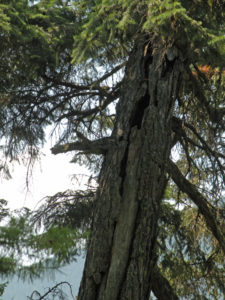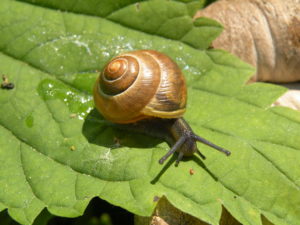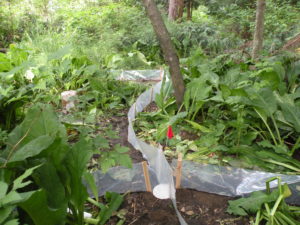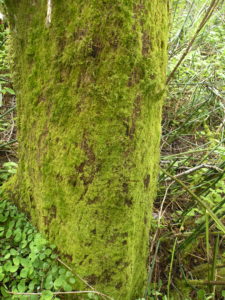JBL has extensive experience conducting Species at Risk Surveys. For example:
 Owl Species of Conservation Concern:
Owl Species of Conservation Concern:
JBL has used nocturnal call-playback surveys to inventory owls at the presence / not detected intensity level. Our surveys follow the BC Inventory Standards for Owls (Hausleitner 2006), and data are collected on the BC Inventory Data Forms for Raptors (MoE 2009). JBL has inventoried several owl species in BC that are provincially or federally at risk, including Northern Spotted Owl (Strix occidentalis caurina), Western Screech-owl (Megascops kennicottii), and Flammulated Owl (Otus flammeolus). Because response rates vary among species, the guidelines require that at least three separate survey events be accomplished during the breeding period.
 Oregon Forestsnail:
Oregon Forestsnail:
The Oregon Forestsnail (Allogona townsendiana) is listed as endangered under the federal Species at Rick Act and is the only SARA-listed gastropod in the Lower Fraser Valley. Oregon Forestsnails occur in moist stands of mixed forest with bigleaf maple (Acer macrophyllum), cottonwood (Populus trichocarpa) and stinging nettle (Urtica dioica), often adjacent to stream banks. JBL has experience in conducting baseline surveys for Oregon Forestsnails using the 2017 Oregon Forestsnail Best Practices Guidebook.
 Pacific Water Shrew:
Pacific Water Shrew:
The Pacific Water Shrew (Sorex bendirii) is an insectivore that lives in aquatic and streamside riparian habitats such as watercourses and wetlands. Southwest BC is the northern extent of this species’ range in Canada. The Pacific Water Shrew is listed as endangered under the federal Species At Risk Act and provincially red-listed by the BC Conservation Data Centre. High-quality habitat for this species includes mature coniferous, deciduous or mixed forest (with western hemlock [Tsuga heterophylla] and western red cedar [Thuja plicata]) associated with dense understory vegetation and abundant downed wood. Key habitat components for the Pacific Water Shrew are high structural diversity, low disturbance and abundant invertebrate food sources. JBL has conducted surveys for Pacific Water Shrew using the 2010 Best Management Practices Guidelines.
 Roell’s Brotherella Moss:
Roell’s Brotherella Moss:
JBL conducted species-at-risk surveys on a 20-acre site near Chilliwack, BC. JBL identified the moss Roell’s brotherella (Brotherella roellii), a provincially Red-listed moss that is listed as Endangered by the Committee on the Status of Endangered Wildlife in Canada. Roell’s brotherella moss occurs in cool, moist mixed deciduous and coniferous forests, second growth forests, and on terraces and flood plains. This species is known to occur in 26 current and 4 historic locations throughout the Fraser Valley. The primary substratum consists of red alder (Alnus rubra), big leaf maple (Acer macrophyllum) and Pacific dogwood (Cornus nuttallii). This moss can also be found on rotten logs and stumps.
